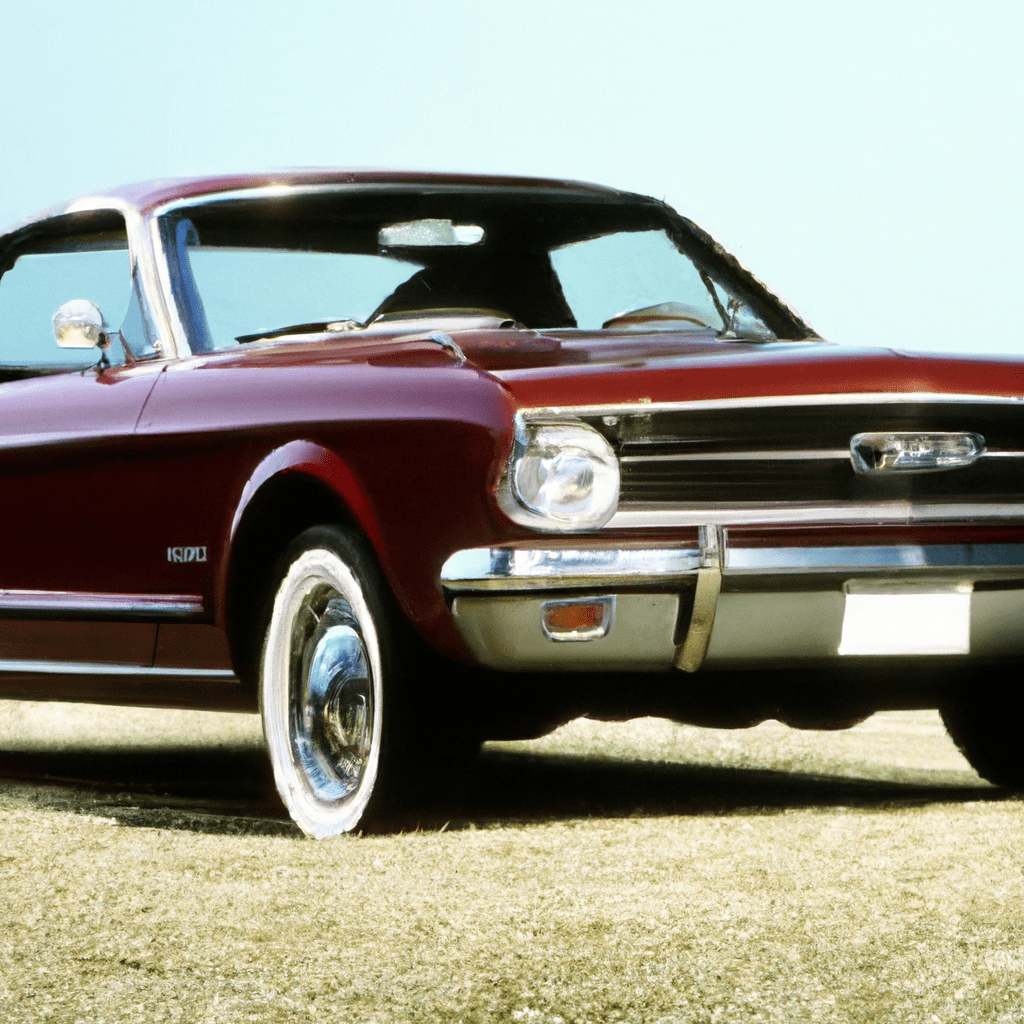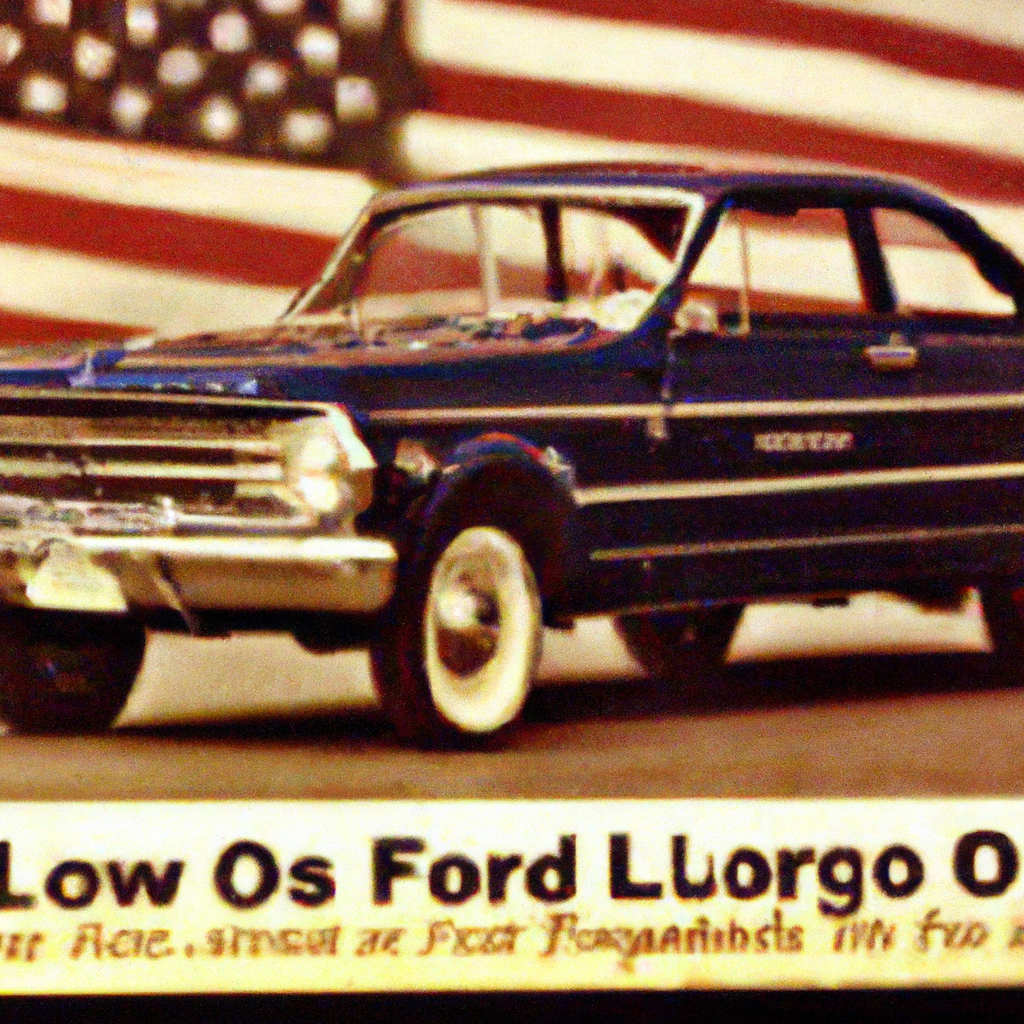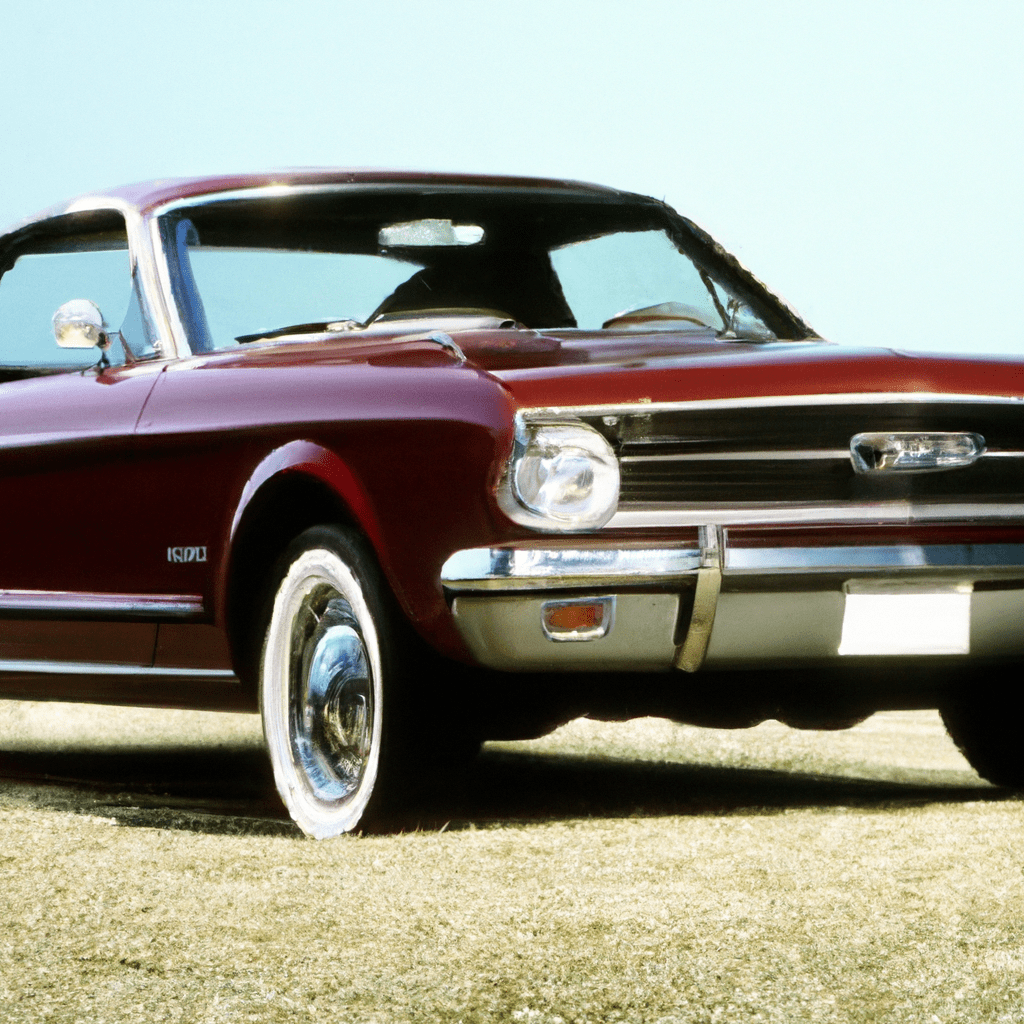You’re about to embark on a journey through the incredible legacy of one of the most innovative automotive brands in history – Ford. From pioneering the production line to introducing groundbreaking safety features, Ford’s milestones in automotive technology have shaped the industry as we know it today. Get ready to discover how this legendary company has continually pushed the boundaries of innovation, revolutionizing the way we drive and changing the course of automotive history.

Henry Ford and the Assembly Line
Henry Ford and the introduction of the assembly line revolutionized the automotive industry. Before Ford’s innovation, cars were handcrafted and time-consuming to produce, making them prohibitively expensive for most people. However, in 1913, Ford implemented the first moving assembly line at his Highland Park plant in Michigan, forever changing the production process.
Introduction of the Assembly Line
Ford’s assembly line allowed for a more efficient and streamlined production process. Instead of individual workers assembling an entire car, each worker was tasked with a specific job on the assembly line, such as installing tires or attaching doors. This division of labor significantly increased productivity, reducing the time required to build a car from more than 12 hours to just 93 minutes.
Impact on the Automotive Industry
The introduction of the assembly line had a profound impact on the automotive industry. By increasing production efficiency, Ford could produce cars more quickly and at a lower cost. As a result, the price of automobiles dropped, making them more accessible to the general public. Ford’s Model T, introduced in 1908, became an iconic symbol of the assembly line’s success, with over 15 million units produced by 1927.
Mass Production and Accessibility
Thanks to Ford’s assembly line and mass production techniques, the automotive industry transitioned from a luxury market to one accessible to the masses. The era of the assembly line marked the beginning of a new chapter in transportation history, allowing ordinary people to own their own cars and fundamentally changing the way people lived and traveled.
Safety Innovations
Ford has also been at the forefront of safety innovations, continuously striving to make vehicles safer for drivers and passengers.
Introduction of Safety Glass
In 1919, Ford introduced laminated safety glass, a significant breakthrough in automotive safety. Unlike regular glass, safety glass is designed to shatter into dull, granular chunks upon impact, reducing the risk of injury from sharp shards. This innovation provided passengers with greater protection in the event of a collision, setting the stage for future advancements in automotive safety.
Seat Belts and Safety Restraints
Recognizing the importance of seat belts in preventing injuries, Ford introduced them as standard equipment on all its vehicles in 1955. This forward-thinking move made Ford one of the first manufacturers to prioritize occupant safety. Ford continued to refine and improve seat belt technology, eventually introducing three-point seat belts, which are now the industry standard for protecting passengers in the event of a crash.
Airbags and Crash Test Research
Ford has also been at the forefront of airbag technology. In the 1980s, Ford was one of the first companies to implement airbags as standard equipment on their vehicles. They also invested heavily in crash test research, using the data gathered to design safer cars and improve occupant protection. Ford’s commitment to safety has led to significant advancements in crashworthiness and occupant protection across the automotive industry.
Engine and Powertrain Advances
Ford’s dedication to innovation extends beyond safety features to advancements in engine and powertrain technologies.
Introduction of the Flathead V8 Engine
In 1932, Henry Ford launched the flathead V8 engine, setting a new standard for power and performance. The V8 engine offered increased horsepower and smoother operation, delivering a thrilling driving experience. Ford’s introduction of the flathead V8 engine revolutionized the automotive industry, making powerful engines more accessible to the average consumer.
Development of the Overhead Cam Engine
In the 1960s, Ford continued to push boundaries by developing the overhead cam (OHC) engine. The OHC engine placed the camshaft above the cylinder head, allowing for improved efficiency and power. This innovative engine design delivered higher RPMs, better fuel economy, and reduced emissions. Ford’s commitment to engine advancements positioned them as a leader in the industry.
Invention of the EcoBoost Engine
In recent years, Ford has focused on developing more environmentally friendly powertrain technologies. The introduction of their EcoBoost engine in 2009 signaled a shift towards smaller, turbocharged engines aimed at improving fuel efficiency without sacrificing performance. The EcoBoost engines offer the power of a larger engine with the fuel economy of a smaller one, addressing the growing demand for greener and more sustainable vehicles.
Innovations in Vehicle Design
Ford’s commitment to innovation extends to vehicle design, resulting in iconic models that have shaped the automotive industry.
Introduction of the Model T
One of Ford’s most significant contributions to vehicle design was the introduction of the Model T in 1908. The Model T was an affordable and reliable car that quickly became a symbol of the industrial age. Its simple yet durable design made it accessible to a wide range of people, forever changing the landscape of transportation as we knew it.
Introduction of the All-Steel Body
In 1935, Ford set another milestone in vehicle design with the introduction of the all-steel body. Prior to this innovation, cars were typically constructed using a combination of wood and steel, which made them prone to rot and required frequent maintenance. Ford’s all-steel body provided increased durability and safety while simplifying the manufacturing process. This breakthrough paved the way for the cars we drive today, which prioritize structural integrity and passenger safety.
Introduction of the Mustang
No article on Ford’s innovations in vehicle design would be complete without mentioning the iconic Mustang. Introduced in 1964, the Mustang revolutionized the American automotive landscape with its sleek design, powerful performance, and affordable price tag. The Mustang became an instant classic, capturing the hearts of car enthusiasts around the world and solidifying its place as a timeless symbol of American automotive design.

Electrification and Hybrid Technology
In response to the growing demand for more environmentally friendly vehicles, Ford has embraced electrification and hybrid technology.
Development of Electric and Hybrid Vehicles
Ford has been a pioneer in the development of electric and hybrid vehicles for many years. From the introduction of the Ford Escape Hybrid in 2004 to the recent unveiling of the all-electric Ford Mustang Mach-E, Ford has demonstrated its commitment to sustainability and reducing carbon emissions. By offering a range of electrified vehicles, Ford is providing consumers with more options to choose from while striving to create a greener future.
Launch of the Ford Escape Hybrid
The launch of the Ford Escape Hybrid in 2004 marked a significant milestone in the automotive industry. As one of the first hybrid SUVs on the market, the Escape Hybrid showcased Ford’s commitment to leveraging hybrid technology across different vehicle segments. The Escape Hybrid offered a combination of fuel efficiency and practicality, making it a popular choice among eco-conscious consumers.
Introduction of the All-Electric Ford Mustang Mach-E
Ford’s most recent foray into electrification is the all-electric Ford Mustang Mach-E. Introduced in 2020, the Mach-E combines the iconic design and performance of the Mustang with the benefits of electric power. With its long-range capabilities and cutting-edge technology, the Mach-E represents a bold step towards a sustainable future for Ford and the automotive industry as a whole.
Connectivity and Infotainment
As technology continues to evolve, Ford has stayed at the forefront of connectivity and infotainment systems.
Introduction of SYNC System
In 2007, Ford introduced the SYNC system, a groundbreaking infotainment platform that allowed drivers to connect their smartphones and control various vehicle functions through voice commands. The SYNC system revolutionized in-car connectivity, providing drivers with hands-free access to music, navigation, and phone calls while keeping their focus on the road.
Integration of Mobile Applications and Smart Features
Ford has also integrated mobile applications and smart features into their vehicles, allowing drivers to interact with their cars in innovative ways. Through apps like FordPass, drivers can remotely start their vehicles, lock/unlock doors, and even locate their parked cars. This integration of mobile technology into the driving experience has made Ford vehicles more convenient and user-friendly.
Expansion of Connectivity and Remote Access
In recent years, Ford has expanded its connectivity features to include advanced systems such as FordPass Connect and Ford Co-Pilot360. These systems enable drivers to stay connected on the go, providing access to features like Wi-Fi hotspots, remote start/stop, and vehicle diagnostics. Ford’s commitment to connectivity and remote access ensures that their vehicles are equipped with the latest technology to enhance the driving experience.
Autonomous and Self-Driving Technology
Ford has positioned itself as a leader in autonomous and self-driving technology, with a focus on collaboration and investment.
Collaboration with Argo AI
In 2017, Ford entered into a partnership with Argo AI, an artificial intelligence company specializing in autonomous vehicle technology. This collaboration aimed to develop a self-driving system for Ford vehicles, combining Argo AI’s expertise in AI and robotics with Ford’s manufacturing capabilities. By working together, Ford and Argo AI are accelerating the development of autonomous vehicles and bringing us closer to a future where cars drive themselves.
Test Fleet of Autonomous Vehicles
To further advance autonomous technology, Ford has deployed a test fleet of autonomous vehicles in cities across the United States. These vehicles are equipped with advanced sensing and computing systems, enabling them to navigate complex urban environments without human intervention. Through extensive testing and data collection, Ford is refining their autonomous technology and ensuring its safety and reliability.
Investment in Self-Driving Technology
Ford has made significant investments in self-driving technology to solidify its position in the autonomous vehicle market. The company has earmarked billions of dollars for research and development, as well as strategic acquisitions and partnerships. Ford’s commitment to self-driving technology reflects their vision of a future where vehicles are safer, more efficient, and seamlessly integrated into our daily lives.
Innovations in Manufacturing Processes
Ford’s legacy of innovation extends to its manufacturing processes, which have continuously evolved to improve efficiency and quality.
Introduction of Ford Rouge Factory
One of the most notable milestones in Ford’s manufacturing history is the introduction of the Ford Rouge Factory. Completed in 1917, the Rouge Factory was a massive industrial complex that integrated all stages of automobile production, from raw materials to finished vehicles. This vertically integrated approach allowed Ford to streamline their manufacturing processes and significantly increase production capacity.
Flexible Manufacturing Systems
Ford has embraced flexible manufacturing systems, further improving efficiency and adaptability. These systems utilize advanced robotics and automation to quickly reconfigure production lines for different models, reducing downtime and allowing for faster product changes. By adopting flexible manufacturing systems, Ford can efficiently respond to market demands and maximize productivity.
Implementation of Lean Manufacturing Techniques
Ford has been a pioneer in lean manufacturing techniques, implementing practices such as just-in-time production and continuous improvement. By optimizing workflow and minimizing waste, Ford’s lean manufacturing approach has resulted in increased efficiency, improved quality, and reduced costs. This relentless commitment to process improvement has allowed Ford to remain competitive in a rapidly evolving industry.
Sustainability Initiatives
Recognizing the importance of sustainability, Ford has implemented various initiatives to reduce its environmental impact.
Reducing Environmental Impact
Ford is committed to minimizing its environmental impact throughout the vehicle lifecycle. From designing vehicles with recyclability in mind to implementing energy-efficient manufacturing processes, Ford strives to reduce waste and energy consumption. Additionally, the company is actively working to reduce greenhouse gas emissions by improving fuel efficiency and exploring alternative fuel sources.
Development of Fuel-Efficient Vehicles
Ford has consistently developed fuel-efficient vehicles to meet the demands of environmentally conscious consumers. Through innovations such as turbocharging, direct fuel injection, and hybrid technology, Ford has increased the efficiency of its vehicles without compromising performance. These advancements have not only reduced fuel consumption but also lowered carbon emissions, contributing to a greener, more sustainable future.
Transition to Renewable Energy Sources
In recent years, Ford has made significant strides in transitioning to renewable energy sources. The company has invested in renewable energy projects, such as wind and solar farms, to reduce its reliance on fossil fuels. Additionally, Ford aims to achieve carbon neutrality by 2050, aligning its sustainability goals with global efforts to combat climate change.
Future Innovations and Vision
Looking ahead, Ford remains committed to pushing the boundaries of automotive technology and delivering innovative solutions.
Investment in Electric and Autonomous Vehicle Technologies
Ford has pledged to invest billions of dollars in electric and autonomous vehicle technologies. By expanding their electric vehicle lineup and further refining their autonomous driving systems, Ford aims to provide consumers with sustainable and advanced mobility solutions. The company’s continued investment in these technologies demonstrates its dedication to shaping the future of transportation.
Expansion of Mobility Solutions
Ford is embracing the concept of mobility as a service by exploring new forms of transportation and shared mobility solutions. Through initiatives like FordPass Mobility Solutions, Ford is developing innovative ways to meet the evolving needs of consumers in a rapidly changing urban landscape. These efforts reflect Ford’s commitment to providing convenient, efficient, and sustainable mobility options for all.
Exploration of New Materials and Manufacturing Processes
Ford is constantly exploring new materials and manufacturing processes to improve vehicle performance, efficiency, and sustainability. From lightweight materials to 3D printing technology, Ford is at the forefront of innovation, seeking to redefine automotive manufacturing. By embracing new materials and processes, Ford aims to create vehicles that are safer, more durable, and more environmentally friendly.
In conclusion, Ford’s legacy of innovation in automotive technology is undeniable. From the introduction of the assembly line to advancements in safety, engine technology, vehicle design, electrification, connectivity, autonomous driving, manufacturing processes, and sustainability initiatives, Ford has consistently pushed the boundaries and shaped the automotive industry. With a vision for a greener and more connected future, Ford continues to lead the way in developing innovative solutions that redefine the way we live and move.


